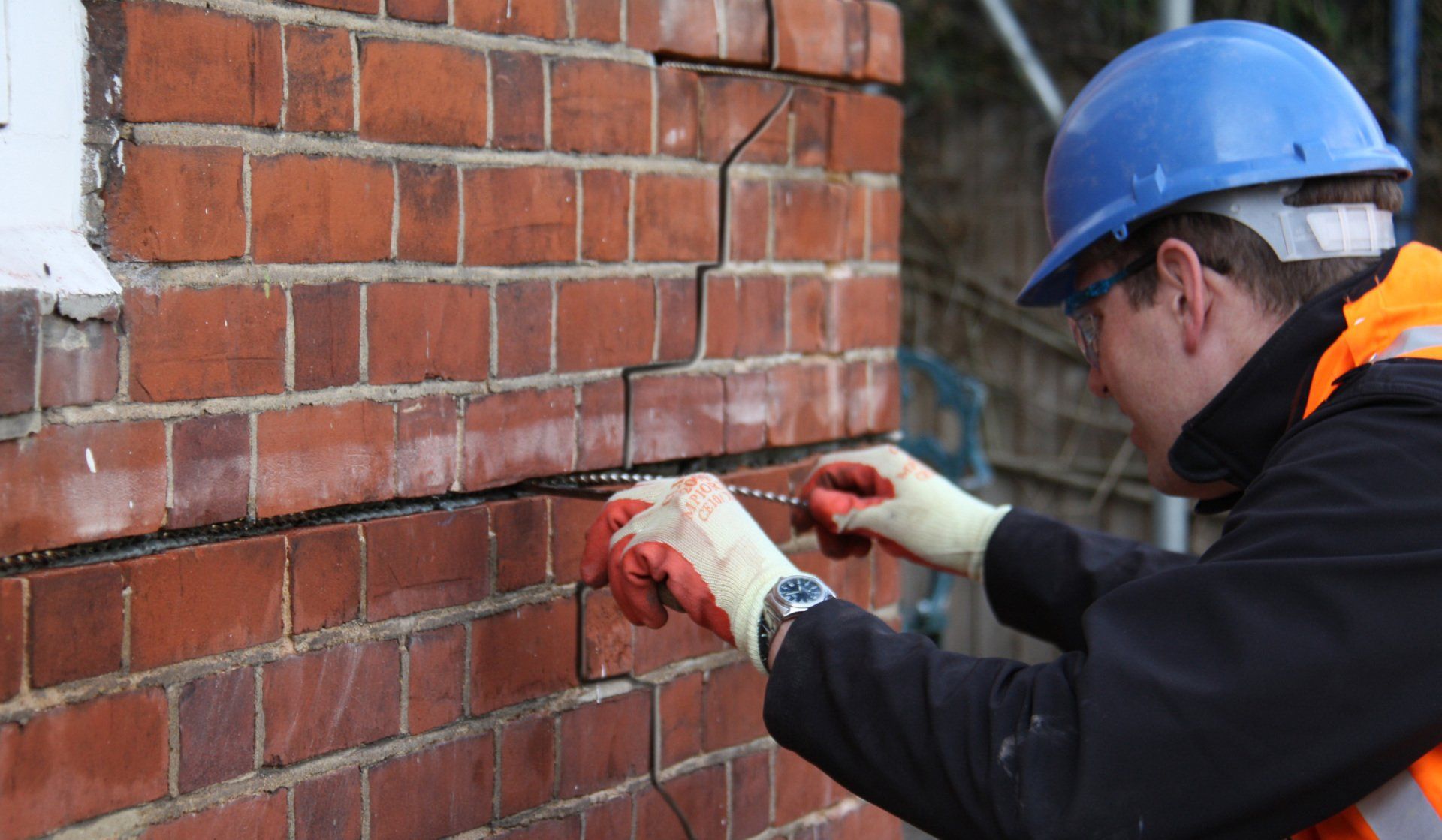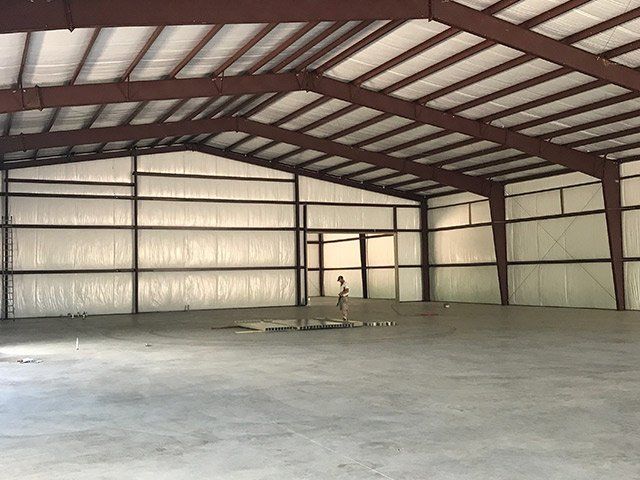Blog Layout
What is structural inspection of properties
May 22, 2020
What is a Structural Inspection?
A structural inspection is visiting a property that could have any defects and preparing a report on the structural condition of the property.
An inspection could be a visual inspection or a detailed intrusive inspection. These inspections are typically performed by a chartered engineer who is a member of the Institution of Structural Engineers or the Institution of Civil Engineers.
A structural inspection and report focuses on all the structural elements of a building. They are generally roof , lintels, floors, walls, foundations and any other structural parts of a property.
Home buyers could require structural inspection of a property as well anyone that need to refurbish or develop an existing property. This property could be a commercial, retail, educational or a residential
At the Oldship hotel in Brighton for example, we were appointed to prepare a visual structural report on the condition of the facade and preparation of the remedial works required.
Our clients could be private house owners, solicitors, commercial property owners, shop oners, banks and mortgage lenders, etc...
When to have a Structural Inspection?
If you intend to alter or refurbish a property, or purchase a property, you may require a structural inspection the property.
Anything from removing a wall, or chimney or loft conversions, etc is likely to require a structural inspection. If you notice any cracks are appearing on a wall or around a window frame or lintels, then you might want to arrange for a structural engineer to visit and inspect the areas in concern. Structural engineers can also prepare reports on flood, fire or subsidence of a property. Typically, these reports can be used for insurance purposes. The insurer generally appoint a structural engineer.
Choosing a Structural Engineer?
When choosing a structural engineer, it is important to chose a one that is a chartered structural or civil engineer, and experience in inspection of properties.
Please contact Bolourchi Ltd on 07884004000 to discuss your requirements.

By Madi Bolourchi
•
15 Jun, 2020
Cracks in walls! You need a structural engineer to inspect the cracks. Cracks in walls can be of a concern, but not every crack is structurally significant. Generally, when you see cracking on a wall in property , they could have been caused due to a variety of reasons. When a client appoint a structural engineer to survey a property when it is bought or sold, then the cracks on a wall or around a window in a wall or in a ceiling etc can be identified. Cracking to a property can be caused due to the following reasons,: - Excessive stress on the structure, locally or throughout the building. - Leaking drains causing the foundations to move. This is called subsidence, which is a movement caused by volumetric change of soild under the foundations which in turn will cause teh walls above to move and crack. - Corrosion of ties in a cavity wall. - Expansion and shrinkage of materials in a building. - Lack of fit, poor construction methods. - Accidental causes. - And many other factors that could be identified when a chartered structural engineer inspect the property. Who to appoint to inspect the property? A chartered structural engineer is required to inspect the cracking that is causing concerned. The structural engineer will assess the condition of the wall/walls and the extent of damage caused by cracking. It may be possible to determine the cause and specify remedial works required straight away, but at times there may need to monitor the cracks for a certain period to determine if the movement causing the cracks is continuing. The underlying cause of cracking to the structure will be identified by the structural engineer, a report will be prepared, and within the report, the remedial works required shall be recommended For further information on structural inspection of properties please contact Bolourchi Ltd at 07884004000 or email info@bolourchi.co.uk

By Madi Bolourchi
•
15 Jun, 2020
This educational information was copied from Wikipedia. Structural engineering is a sub-discipline of civil engineering in which structural engineers are trained to design the 'bones and muscles' that create the form and shape of man made structures. Structural engineers need to understand and calculate the stability, strength and rigidity of built structures for buildings[1] and nonbuilding structures. The structural designs are integrated with those of other designers such as architects and building services engineer and often supervise the construction of projects by contractors on site.[2] They can also be involved in the design of machinery, medical equipment, and vehicles where structural integrity affects functioning and safety. See glossary of structural engineering. Structural engineering theory is based upon applied physical laws and empirical knowledge of the structural performance of different materials and geometries. Structural engineering design uses a number of relatively simple structural concepts to build complex structural systems. Structural engineers are responsible for making creative and efficient use of funds, structural elements and materials to achieve these goals.[2] History of structural engineering Pont du Gard, France, a Roman era aqueduct circa 19 BC. Structural engineering dates back to 2700 B.C.E. when the step pyramid for Pharaoh Djoser was built by Imhotep, the first engineer in history known by name. Pyramids were the most common major structures built by ancient civilizations because the structural form of a pyramid is inherently stable and can be almost infinitely scaled (as opposed to most other structural forms, which cannot be linearly increased in size in proportion to increased loads).[3] The structural stability of the pyramid, whilst primarily gained from its shape, relies also on the strength of the stone from which it is constructed, and its ability to support the weight of the stone above it.[4] The limestone blocks were often taken from a quarry near the build site and have a compressive strength from 30 to 250 MPa (MPa = Pa × 106).[5] Therefore, the structural strength of the pyramid stems from the material properties of the stones from which it was built rather than the pyramid's geometry. Throughout ancient and medieval history most architectural design and construction was carried out by artisans, such as stonemasons and carpenters, rising to the role of master builder. No theory of structures existed, and understanding of how structures stood up was extremely limited, and based almost entirely on empirical evidence of 'what had worked before'. Knowledge was retained by guilds and seldom supplanted by advances. Structures were repetitive, and increases in scale were incremental.[3] No record exists of the first calculations of the strength of structural members or the behavior of structural material, but the profession of structural engineer only really took shape with the Industrial Revolution and the re-invention of concrete (see History of Concrete. The physical sciences underlying structural engineering began to be understood in the Renaissance and have since developed into computer-based applications pioneered in the 1970s.[6] Timeline Galileo Galilei published the book Two New Sciences in which he examined the failure of simple structures Isaac Newton published Philosophiae Naturalis Principia Mathematica which contains the Newton's laws of motion Leonhard Euler developed the theory of buckling of columns 1452–1519 Leonardo da Vinci made many contributions 1638: Galileo Galilei published the book Two New Sciences in which he examined the failure of simple 1660: Hooke's law by Robert Hooke 1687: Isaac Newton published Philosophiæ Naturalis Principia Mathematica which contains the Newton's laws of motion 1750: Euler–Bernoulli beam equation 1700–1782: Daniel Bernoulli introduced the principle of virtual work 1707–1783: Leonhard Euler developed the theory of buckling of columns 1826: Claude-Louis Navier published a treatise on the elastic behaviors of structures 1873: Carlo Alberto Castigliano presented his dissertation "Intorno ai sistemi elastici", which contains his theorem for computing displacement as partial derivative of the strain energy. This theorem includes the method of "least work" as a special case 1874: Otto Mohr formalized the idea of a statically indeterminate structure. 1922: Timoshenko corrects the Euler-Bernoulli beam equation 1936: Hardy Cross' publication of the moment distribution method, an important innovation in the design of continuous frames. 1941: Alexander Hrennikoff solved the discretization of plane elasticity problems using a lattice framework 1942: R. Courant divided a domain into finite subregions 1956: J. Turner, R. W. Clough, H. C. Martin, and L. J. Topp's paper on the "Stiffness and Deflection of Complex Structures" introduces the name "finite-element method" and is widely recognized as the first comprehensive treatment of the method as it is known today Structural failure Main articles: Structural failure and List of structural failures and collapses The history of structural engineering contains many collapses and failures. Sometimes this is due to obvious negligence, as in the case of the Pétion-Ville school collapse, in which Rev. Fortin Augustin "constructed the building all by himself, saying he didn't need an engineer as he had good knowledge of construction" following a partial collapse of the three-story schoolhouse that sent neighbors fleeing. The final collapse killed 94 people, mostly children. In other cases structural failures require careful study, and the results of these inquiries have resulted in improved practices and greater understanding of the science of structural engineering. Some such studies are the result of forensic engineering investigations where the original engineer seems to have done everything in accordance with the state of the profession and acceptable practice yet a failure still eventuated. A famous case of structural knowledge and practice being advanced in this manner can be found in a series of failures involving box girders which collapsed in Australia during the 1970s. Structural engineering theory Figure of a bolt in shear stress. Top figure illustrates single shear, bottom figure illustrates double shear. Structural engineering depends upon a detailed knowledge of applied mechanics, materials science and applied mathematics to understand and predict how structures support and resist self-weight and imposed loads. To apply the knowledge successfully a structural engineer generally requires detailed knowledge of relevant empirical and theoretical design codes, the techniques of structural analysis, as well as some knowledge of the corrosion resistance of the materials and structures, especially when those structures are exposed to the external environment. Since the 1990s, specialist software has become available to aid in the design of structures, with the functionality to assist in the drawing, analyzing and designing of structures with maximum precision; examples include AutoCAD, StaadPro, ETABS, Prokon, Revit Structure, Inducta RCB, etc. Such software may also take into consideration environmental loads, such as from earthquakes and winds. Profession Structural engineers are responsible for engineering design and structural analysis. Entry-level structural engineers may design the individual structural elements of a structure, such as the beams and columns of a building. More experienced engineers may be responsible for the structural design and integrity of an entire system, such as a building. Structural engineers often specialize in particular types of structures, such as buildings, bridges, pipelines, industrial, tunnels, vehicles, ships, aircraft and spacecraft. Structural engineers who specialize in buildings often specialize in particular construction materials such as concrete, steel, wood, masonry, alloys and composites, and may focus on particular types of buildings such as offices, schools, hospitals, residential, and so forth. Structural engineering has existed since humans first started to construct their own structures. It became a more defined and formalized profession with the emergence of the architecture as distinct profession from the engineering during the industrial revolution in the late 19th century. Until then, the architect and the structural engineer were usually one and the same thing – the master builder. Only with the development of specialized knowledge of structural theories that emerged during the 19th and early 20th centuries, did the professional structural engineers come into existence. The role of a structural engineer today involves a significant understanding of both static and dynamic loading, and the structures that are available to resist them. The complexity of modern structures often requires a great deal of creativity from the engineer in order to ensure the structures support and resist the loads they are subjected to. A structural engineer will typically have a four or five year undergraduate degree, followed by a minimum of three years of professional practice before being considered fully qualified. Structural engineers are licensed or accredited by different learned societies and regulatory bodies around the world (for example, the Institution of Structural Engineers in the UK). Depending on the degree course they have studied and/or the jurisdiction they are seeking licensure in, they may be accredited (or licensed) as just structural engineers, or as civil engineers, or as both civil and structural engineers. Another international organisation is IABSE(International Association for Bridge and Structural Engineering).[7] The aim of that association is to exchange knowledge and to advance the practice of structural engineering worldwide in the service of the profession and society. Specializations Building structures Sydney Opera House, designed by Architect Jørn Utzon and structural design by Ove Arup & Partners Millennium Dome in London, UK, by Richard Rogers and Buro Happold Burj Khalifa, in Dubai, the world's tallest building, shown under construction in 2007 (since completed) Structural building engineering includes all structural engineering related to the design of buildings. It is a branch of structural engineering closely affiliated with architecture. Structural building engineering is primarily driven by the creative manipulation of materials and forms and the underlying mathematical and scientific ideas to achieve an end which fulfills its functional requirements and is structurally safe when subjected to all the loads it could reasonably be expected to experience. This is subtly different from architectural design, which is driven by the creative manipulation of materials and forms, mass, space, volume, texture and light to achieve an end which is aesthetic, functional and often artistic. The architect is usually the lead designer on buildings, with a structural engineer employed as a sub-consultant. The degree to which each discipline actually leads the design depends heavily on the type of structure. Many structures are structurally simple and led by architecture, such as multi-storey office buildings and housing, while other structures, such as tensile structures, shells and gridshells are heavily dependent on their form for their strength, and the engineer may have a more significant influence on the form, and hence much of the aesthetic, than the architect. The structural design for a building must ensure that the building is able to stand up safely, able to function without excessive deflections or movements which may cause fatigue of structural elements, cracking or failure of fixtures, fittings or partitions, or discomfort for occupants. It must account for movements and forces due to temperature, creep, cracking and imposed loads. It must also ensure that the design is practically buildable within acceptable manufacturing tolerances of the materials. It must allow the architecture to work, and the building services to fit within the building and function (air conditioning, ventilation, smoke extract, electrics, lighting etc.). The structural design of a modern building can be extremely complex, and often requires a large team to complete. Structural engineering specialties for buildings include: Earthquake engineering Façade engineering Fire engineering Roof engineering Tower engineering Wind engineering For further information on structural engineering please contact Bolourchi Ltd on 07884004000.
CONTACT INFORMATION
Phone: 0788 4004000
Email:
info@bolourchi.co.uk
© 2024
by Empire Digital Marketing | All Rights Reserved | Bolourchi


